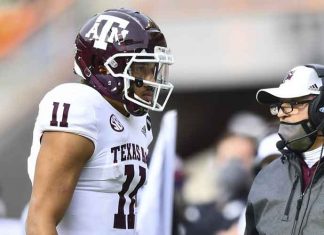The NCAA is about two weeks away from finally making some substantial reforms to transfer rules. The changes will not be quite as extensive as some had hoped and the work is not complete, but considering previous failed attempts, getting anything accomplished on transfers can be counted as a success.
The NCAA’s transfer working group, led by South Dakota State athletic director Justin Sell, will reconvene in Indianapolis on June 11 and plans to present a proposal to the Division I Council that will end the practice of schools and coaches blocking an athlete from transferring or dictating where an athlete can go. The change to a notification model from a permission model is likely to pass that week, Sell said.
”We’ve got nothing but really positive feedback across the board,” Sell told The Associated Press on Thursday. ”I’m assuming that’s going to go through very easily and smoothly.”
Currently, an athlete must ask a coach for permission to contact other schools when choosing to transfer. A school interested in recruiting a transferring player also must ask the athlete’s current school for permission to recruit the athlete. Without permission from the athlete’s original school, the athlete cannot get financial aid from another school.
The new model would free athletes to be contacted when they notify their current coaches. The athletes’ names would go into a database created and managed by the NCAA, alerting schools of who can be recruited. The changes will come with stricter tampering rules to help appease coaches who worry illegal recruiting could rise.
Sell’s group has been working on transfer reform since last year. The NCAA has had several committees take a crack at transfer rules in recent years, but this is the first to come up with something substantive – if not comprehensive.
”We aren’t going to get as far down the path on transfers as I think most people hoped we would,” Big 12 Commissioner Bob Bowlsby said this week during the conference’s meetings in Dallas. ”But the permission to transfer is gone, we think it will be gone, and the notification of transfers coming in. What that does at a practical level is it switches the control from the coach or the institution to the student-athlete. We think that’s the right way to go.”
Much of the talk about transfers focuses on the so-called year-in-residence, the one year a player in the most high profile sports such as football and basketball must sit out after switching schools.
There was talk of easing that restriction, which doesn’t exist in most NCAA sports. Golfers, tennis players and other athletes in traditionally nonrevenue sports can transfer one time without sitting out. There was never serious consideration to lifting the year-in-residence altogether. There was discussion about tying unrestricted transfer to an athlete’s grade point average. That idea has fallen off the table amid concerns about creating an inequitable system that could face legal challenges.
The transfer working group initially was looking at uniformity across all sports. Now that will be re-examined in the fall, Sell said.
Transfer rules also vary from conference to conference and those rules are being reconsidered at league-level meetings as well. Most notably, what to do about transfers within conference. Some leagues are stricter than others.
At the Southeastern Conference meetings in Destin, Florida, this week, the league is considering whether players who transfer from a school under NCAA sanctions should be allowed to go to another SEC school. There is also a debate about whether graduate transfers, who are not required to sit out a season by NCAA rules, should be allowed to transfer within the SEC and play immediately. The SEC requires grad transfers to sit out a season if they want to stay in conference.
The conference can provide a waiver to allow in-conference transfers, which can put coaches who want to follow the letter of the law in a tough spot.
”If we agree in the SEC at these meetings that we’re going to have free agency in our league and everybody can go wherever they want to go when they graduate, that’s what we should do,” Alabama coach Nick Saban told reporters. ”But if we don’t do that, why is it on me? We have a conference rule that says … he can do it, but he has to sit out for a year. So, why is it on me? It’s not even my decision. It’s a conference rule.”
The transfer working group is hoping to have feedback from conferences on two other ideas:
-Allowing incoming recruits to transfer without sitting out if there is a coaching change after they sign a national letter of intent.
-Making schools commit a scholarship to a graduate transfer for the length of the graduate program, no matter how long the athlete stays in school.
But for now, the main focused is getting the notification model proposal across the finish line.
”Our No. 1 deal is to kind of get that win,” Sell said.
—
AP Sports Writer Stephen Hawkins in Dallas contributed.
—
Follow Ralph D. Russo at www.Twitter.com/ralphDrussoAP
—
More AP college football at www.collegefootball.ap.org and https://twitter.com/AP-Top25
25% Bonus via Western Union

















